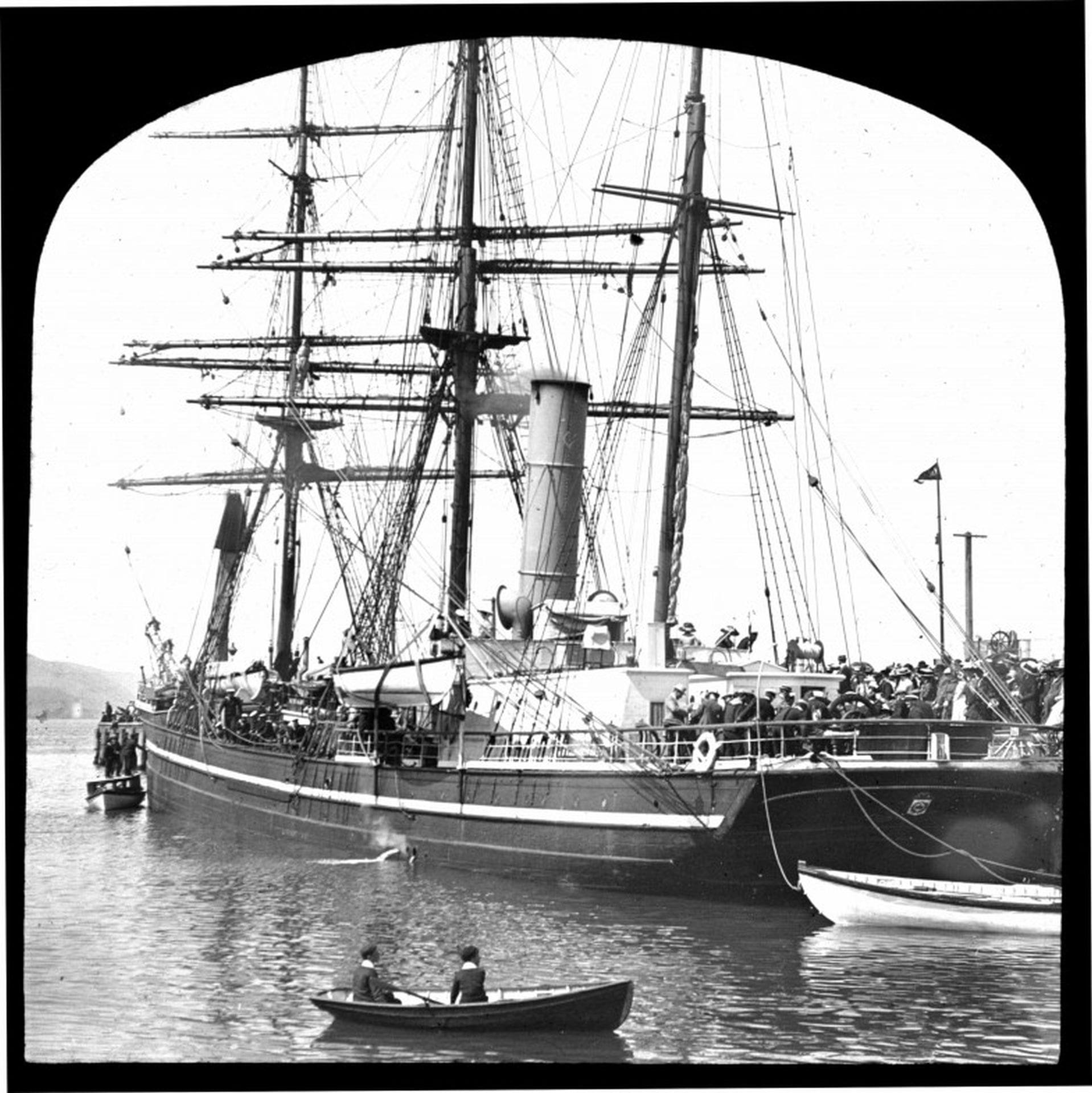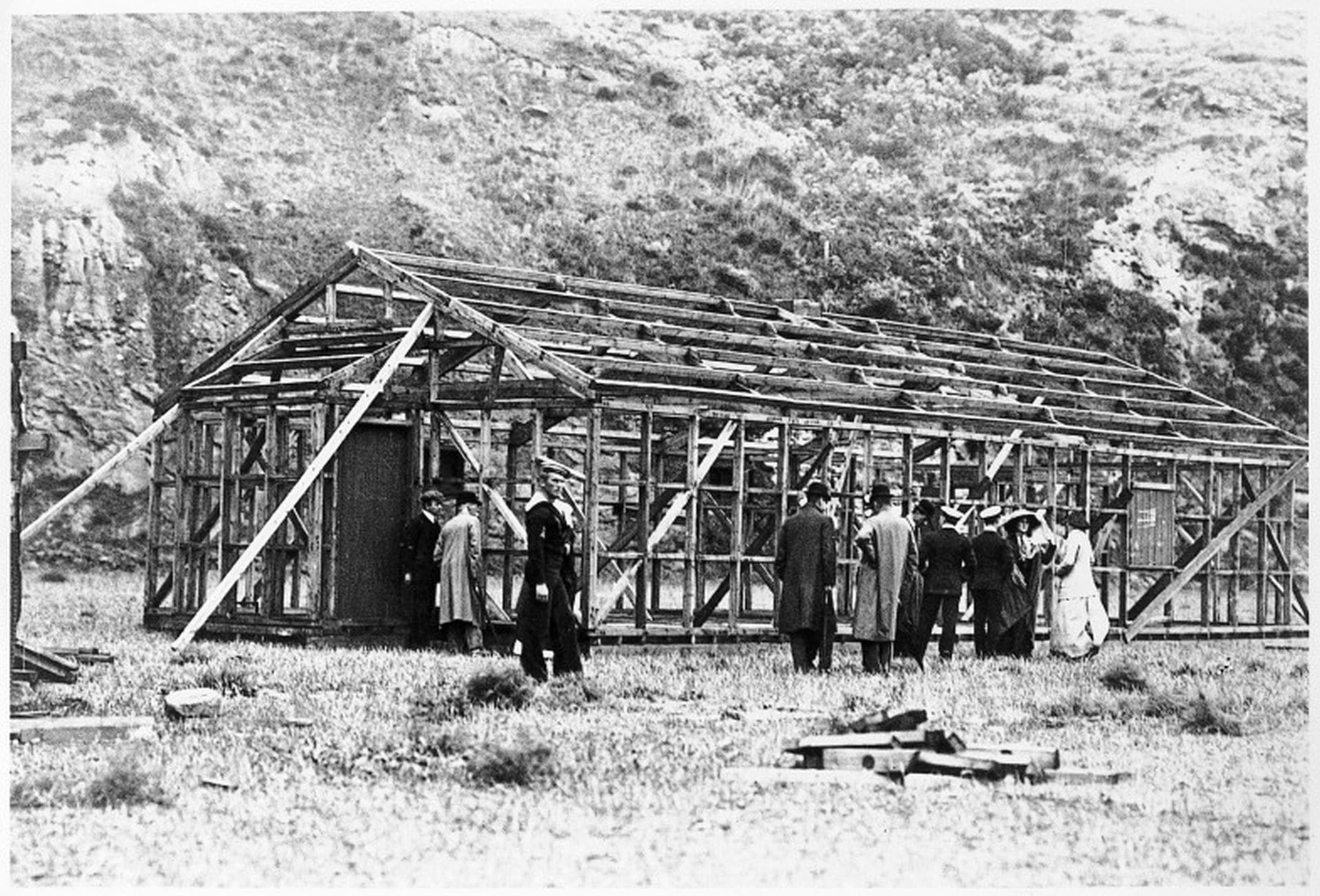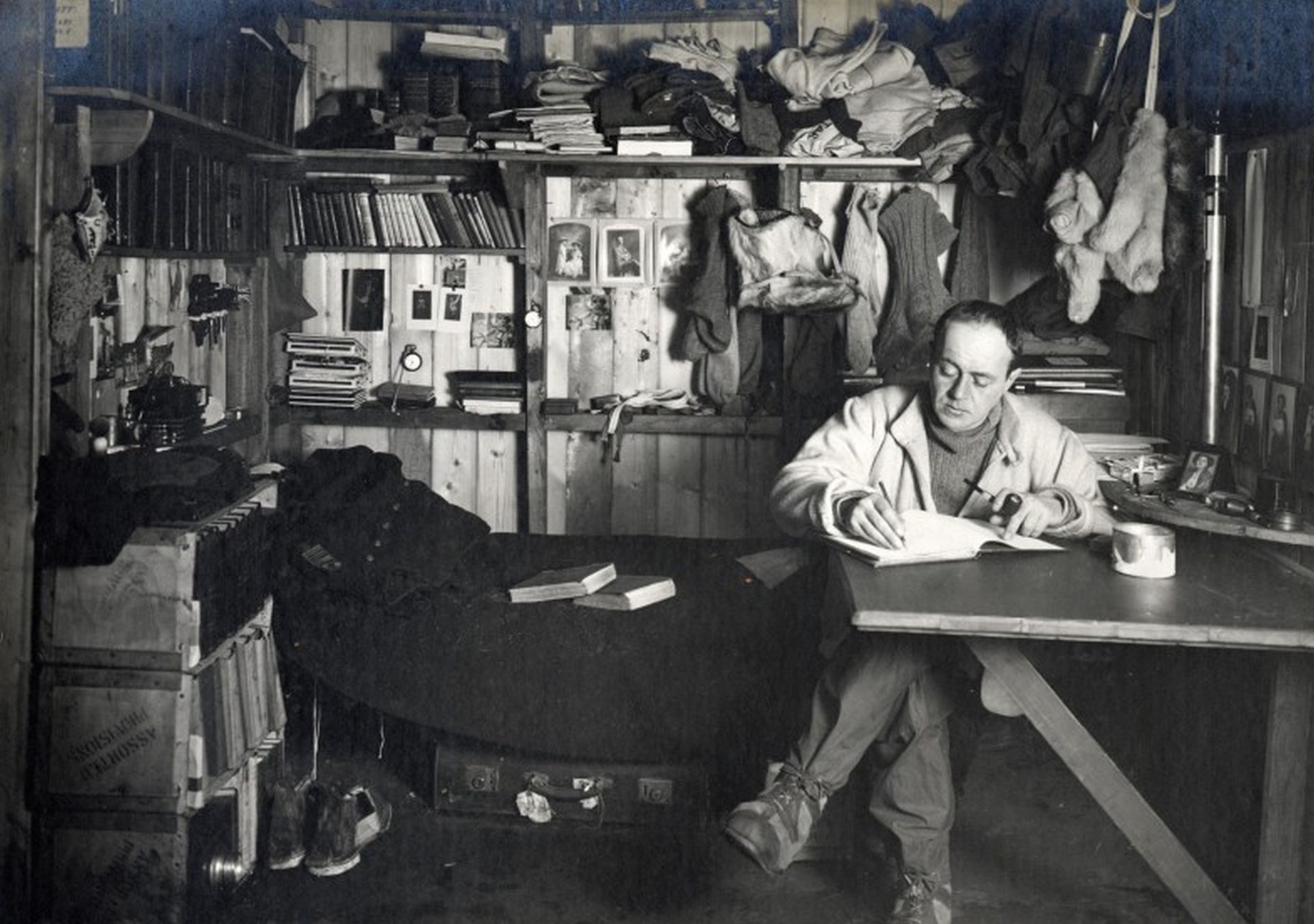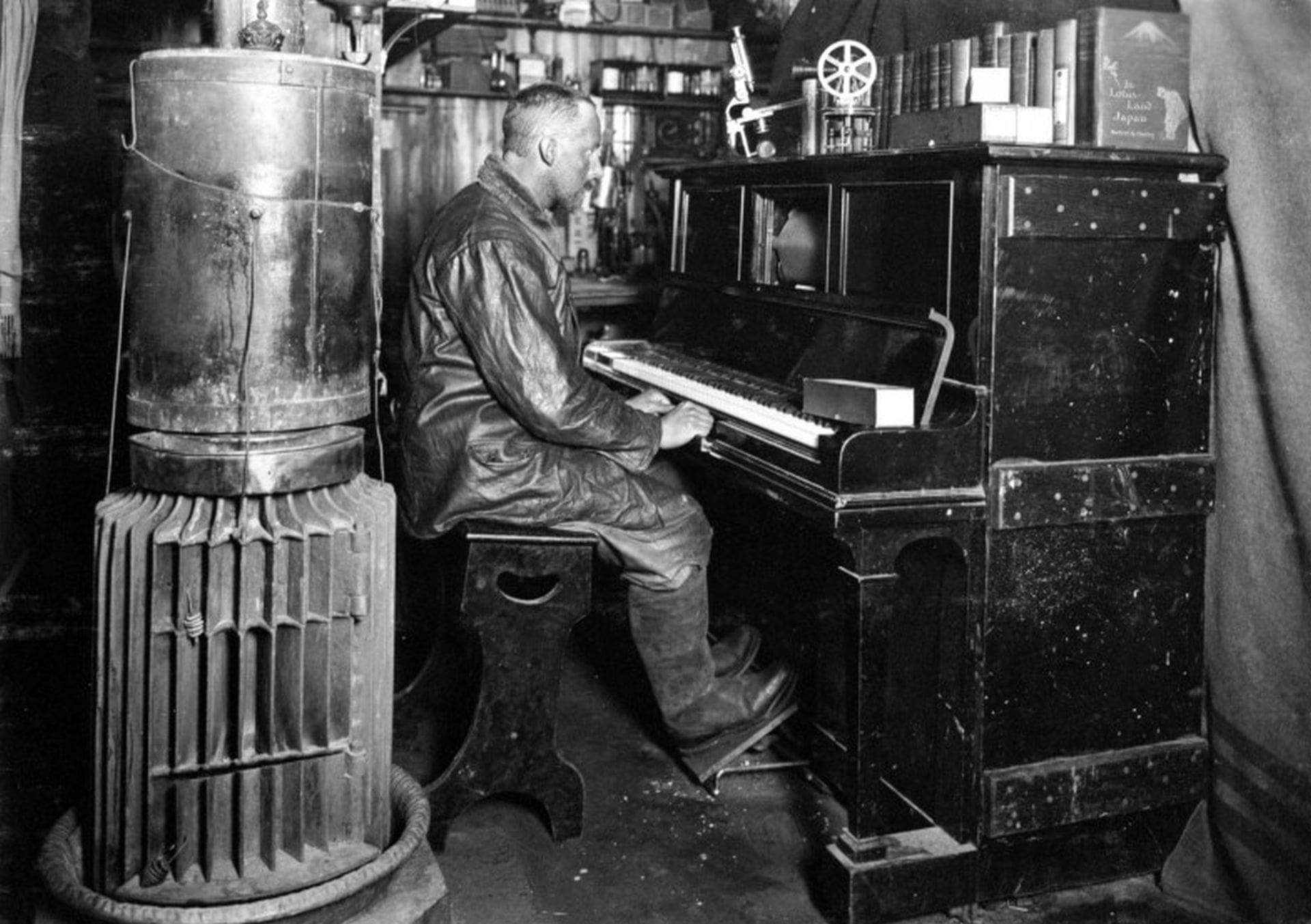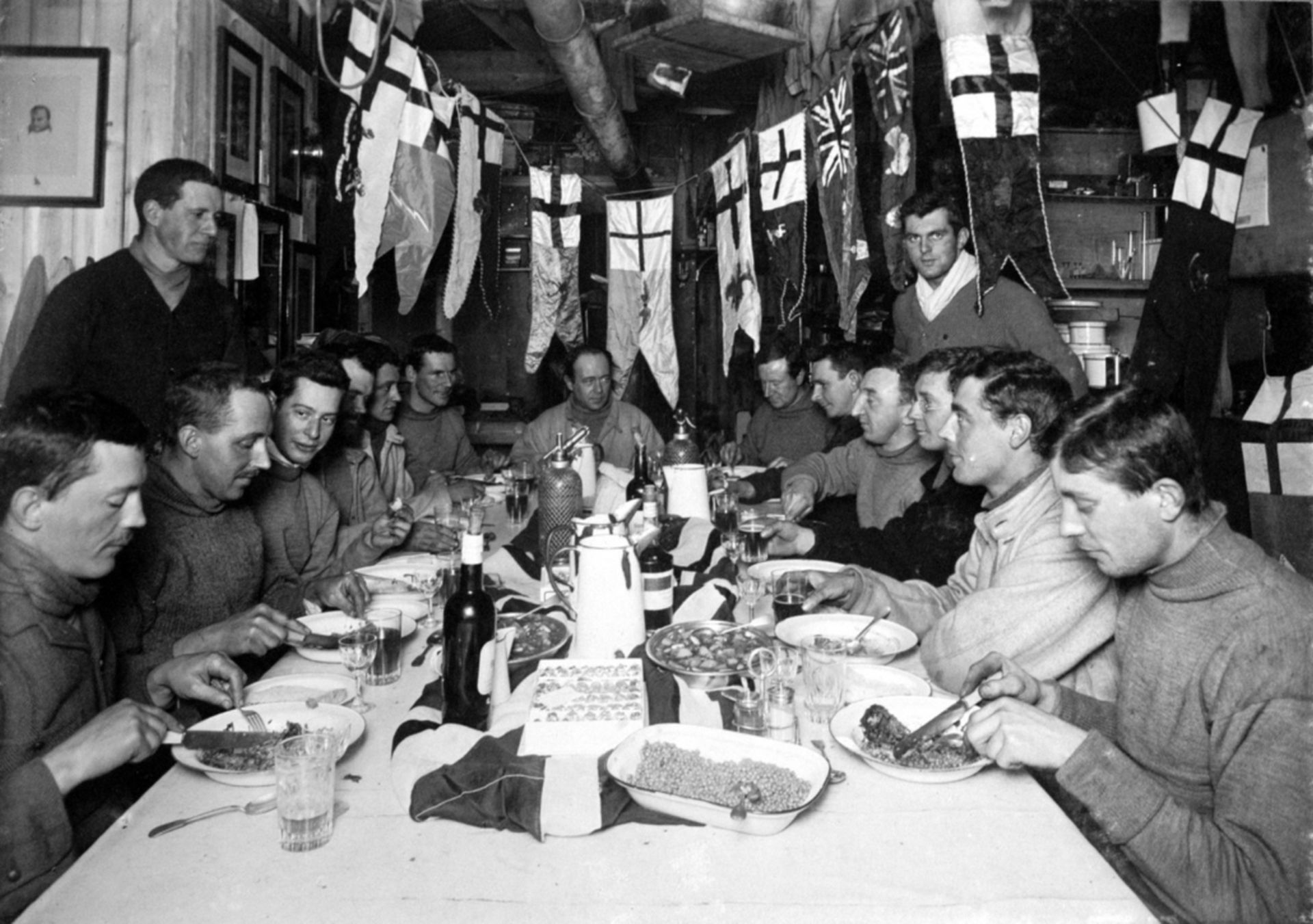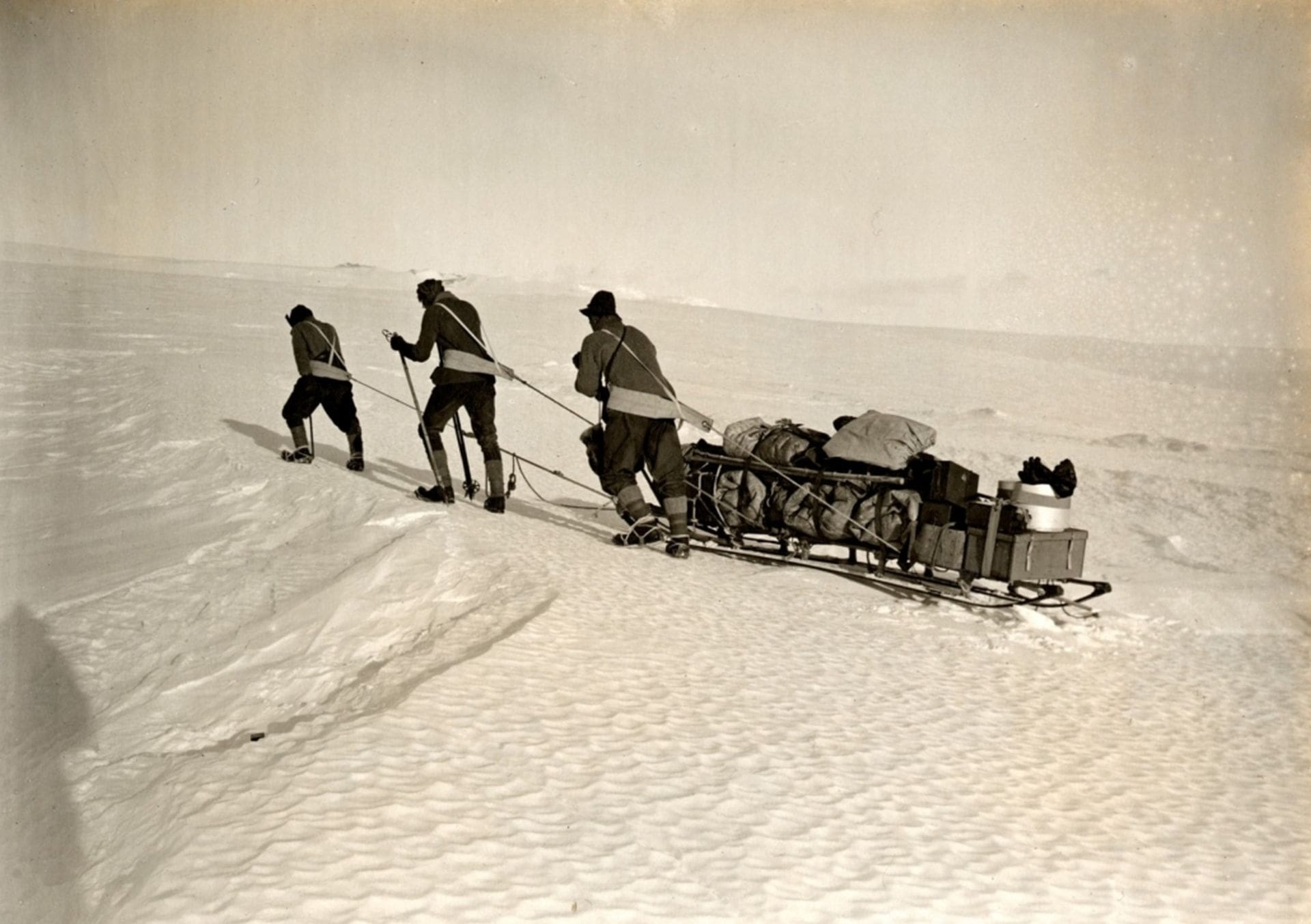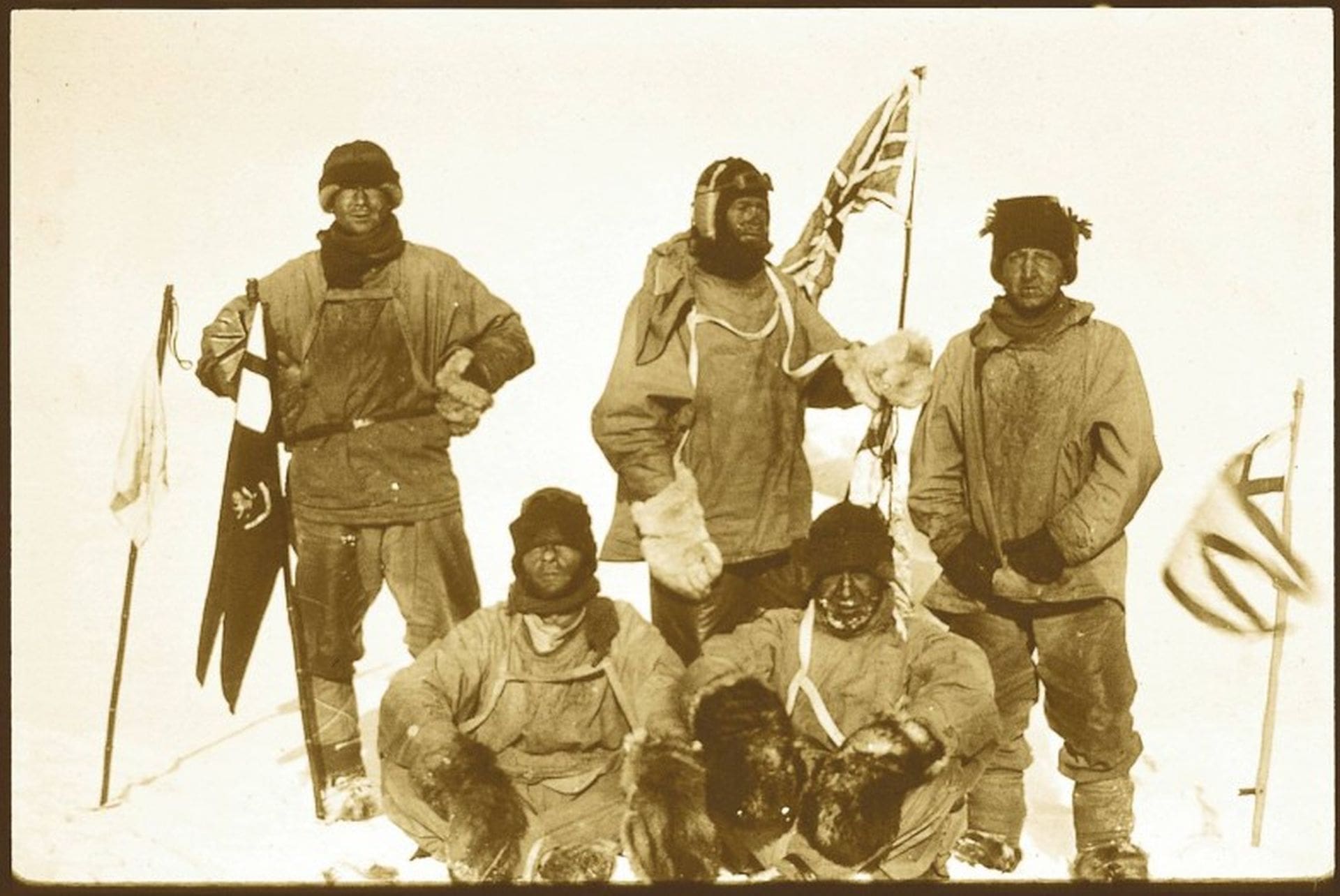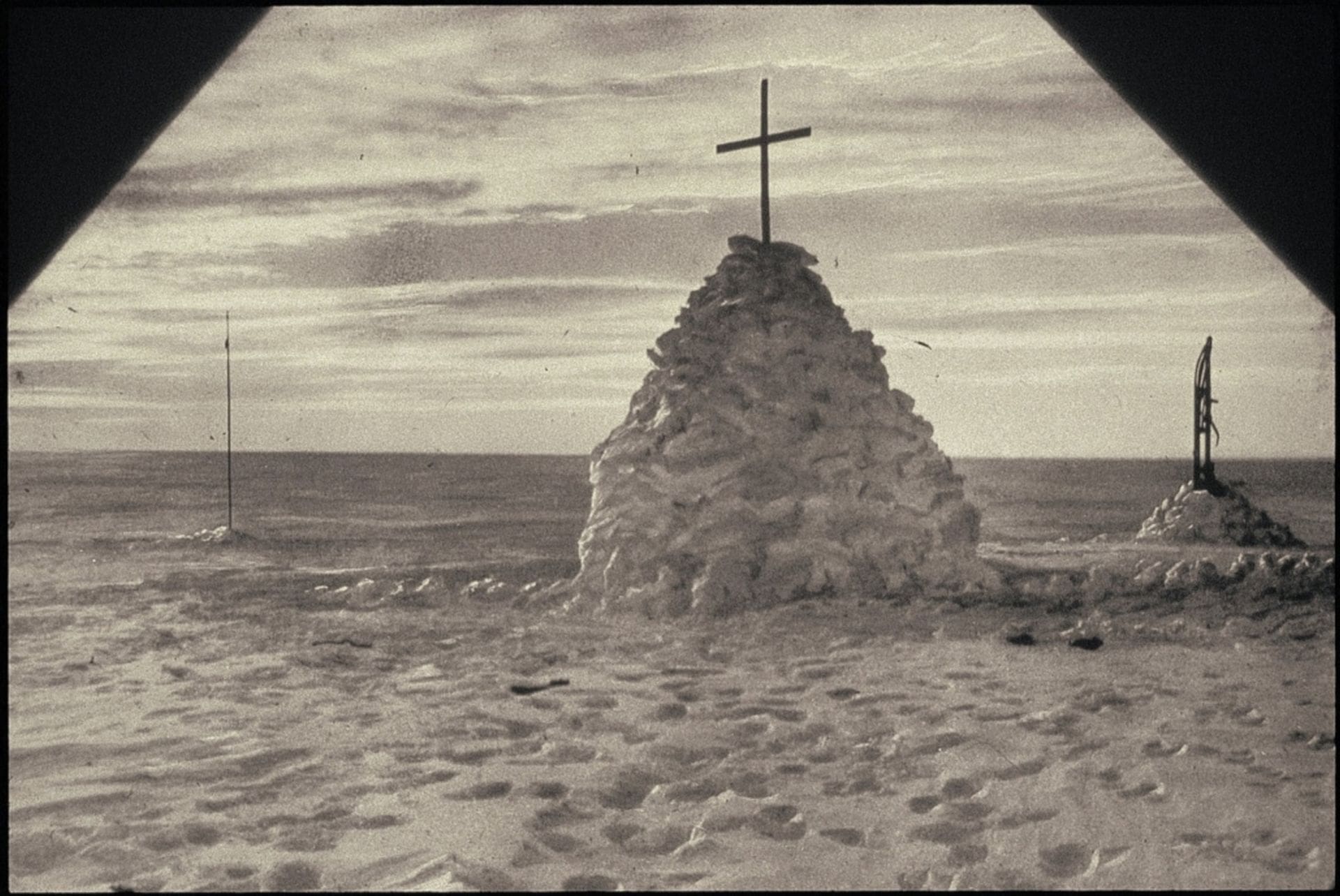Scott, Wilson, and Bowers perished just 11 miles from One Ton Depot, itself about 150 miles from Hut Point.
Earlier in March, Cherry-Garrard and Demetri headed south to meet the Polar Party, but continued bad weather and blizzards prevented their efforts and they turned back having waited for Scott and his team at One Ton Depot for six days. The failure to reach the stricken Polar Party was something that was to weigh heavily on Cherry-Garrard for the rest of his days.
By April, the rest of the party realised that some adversity must have befallen Scott. On 10 April Tryggve Gran wrote:
“Alas, our fears of the last week are justified. The Polar Party have still not returned to Hut Point; their fate must be sealed.”
Back at Cape Evans, the Terra Nova had returned on 22 February and Davies erected a 28 square metre annex along the west end of the hut, enclosing the porch, and a more substantial stables was built to house the seven mules that had been brought south. The Terra Nova had uplifted Campbell’s Northern Party from Cape Adare and put them down on 8 January 1912 at Evans Coves for further geological work; it was to collect them a month later. (However, because of the ice conditions, the ship was not able to pick them up as planned, and the party spent a miserable winter in a snow cave at Inexpressible Island, Terra Nova Bay; they subsisted on seal meat, finally reaching Cape Evans on 7 November 1912, almost two years after being put down at Cape Adare.)
During this summer, a second expedition of the Western Party explored the Granite Harbour area; in total, the party explored and mapped some 100 miles of coastline, extending in places up to 30 miles inland. The Party was again Taylor and Debenham, this time supported by Gran and Forde. They left Cape Evans early in November and were collected by Terra Nova and taken back to Cape Evans in February 1912.
Thirteen men settled down for the second winter. Lieutenant Evans had been invalided home on the Terra Nova with scurvy, and Dr Atkinson took over as leader. There were two new men, Archer and Williamson, the others remaining being Cherry-Garrard, Crean, Debenham, Demetri, Gran, Hooper, Keohane, Lashly, Nelson and Wright. With Scott and his four companions missing, presumed dead, and the fate of the six men of the Northern Party unknown, their mood was sombre.
Near disasters occurred on two occasions, once when an experimental lamp blew up, setting the end of the table and floor alight, and again on 5 September when the chimney caught fire. According to Atkinson:
“The fire started at first in the centre and gradually spread down towards the galley or cooking range. We got the flames under control by covering the chimney on the outside with large slabs of snow, the inside of the hut meanwhile being full of smoke and smuts. After some trouble the funnel was disjointed, taken out and swept through. During the worst time the funnel for nearly half its length was red-hot and glowing, and the heat inside the hut was very uncomfortable.”
“Scientific work continued through the winter. Wright cut a hole in the floor of Ponting’s darkroom and set a kenyte boulder in the permafrost; this formed a base for his pendulum and ‘he was able to take his [gravity] observations more accurately and in greater comfort’.”
Mid-winter day was again celebrated with an impressive dinner, and Cherry-Garrard presented another issue of the South Polar Times.
Finally, the second long winter ended and, on 14 October, search parties set out to look for Scott and his team. Early in the morning of 12 November, a search party located the tent containing the bodies of Scott, Wilson and Bowers. The tent was collapsed over the top of their frozen bodies, and a large snow cairn built and marked with a cross made from Tryggve Gran’s ski.
After the incredible hardship of a winter in a snow cave at Inexpressible Island, Campbell’s Northern Party finally reached the safety of Cape Evans on 7 November. This was the one piece of good news for those at Cape Evans, just learning of the story of the Polar Party.
On 18 January 1913, the Terra Nova returned on her third and final voyage and the Cape Evans hut was closed up. Evans, who returned in command of the ship, noted:
“We have left at Cape Evans an outfit and stores that would see a dozen resourceful men through one summer and winter at least.”
The British Antarctic Expedition had achieved a great deal. The Union Jack was flown at the South Pole, a winter journey had been made to the Emperor penguin colony at Cape Crozier, extensive geological field work had been achieved by the northern and western parties, an impressive scientific and surveying programme was concluded and the second ascent was made of Mount Erebus. Very thorough meteorological records were kept, and these still provide useful base data today, while photographic images from the expedition are among the most evocative ever taken in the Antarctic.
One final duty remained: a large cross of jarrah with carved inscription was erected on Observation Hill above Hut Point to the memory of Scott, Wilson, Bowers, Oates and Evans.
Only two years would pass before Scott’s hut at Cape Evans was again occupied.
![]()
![]()


